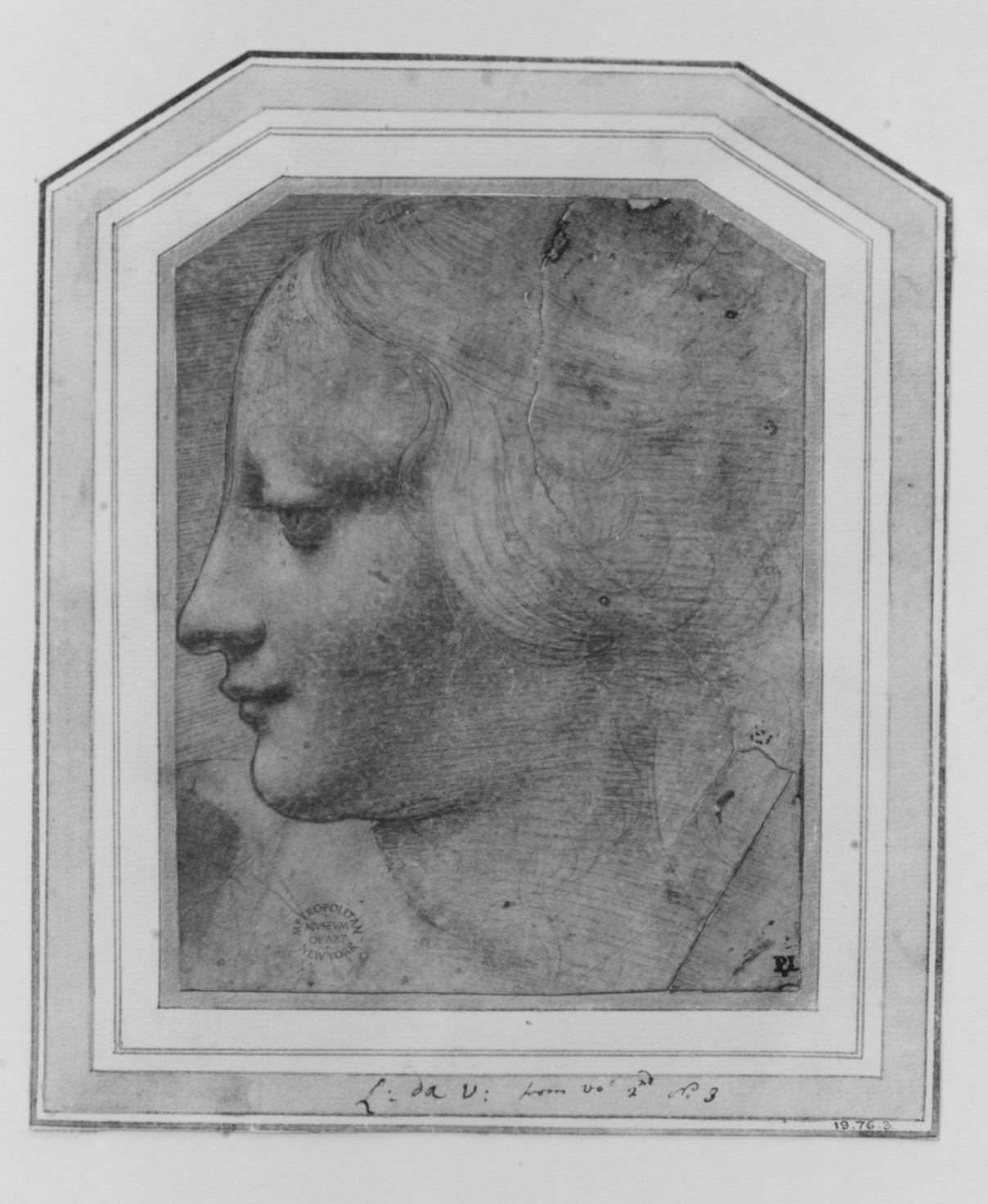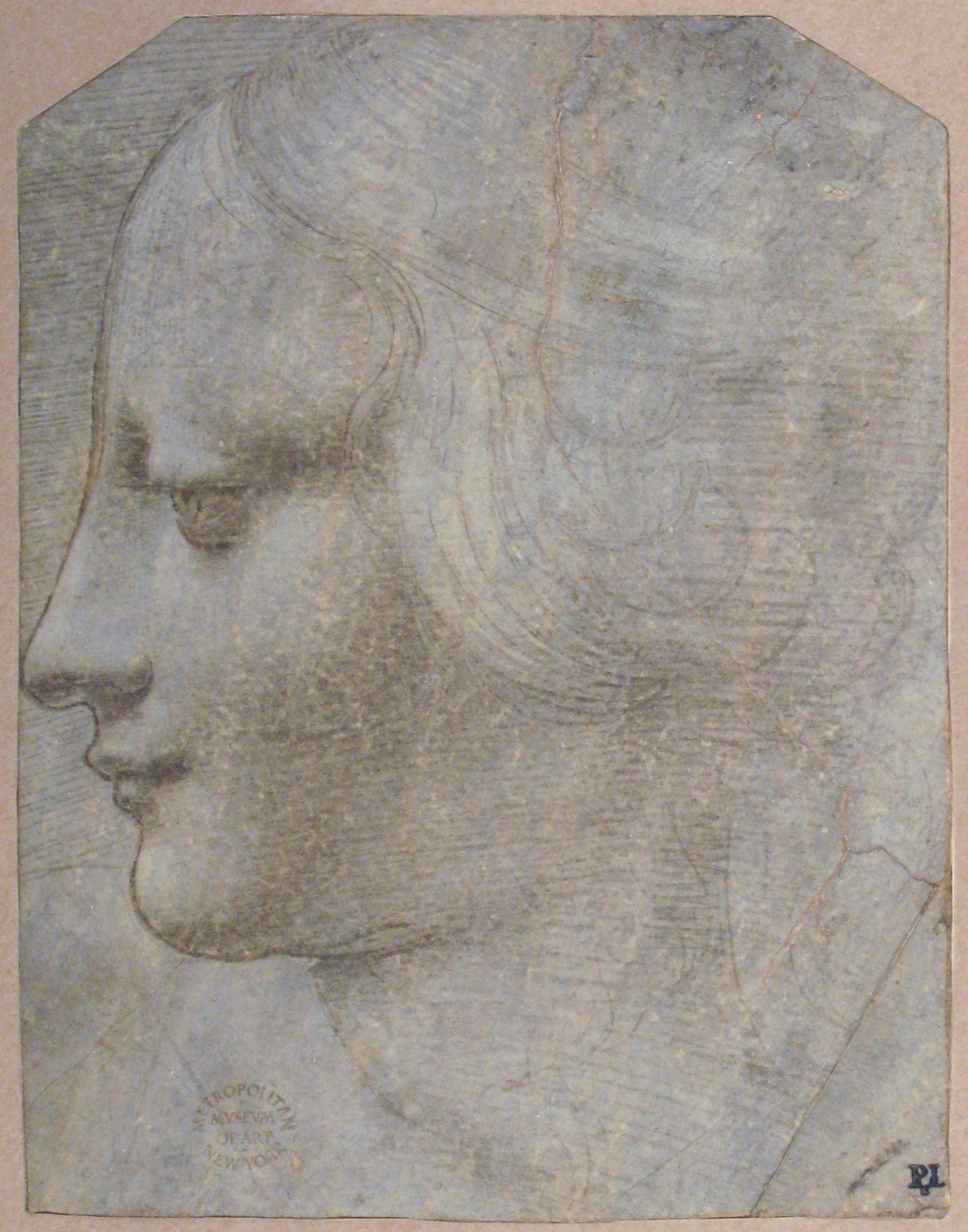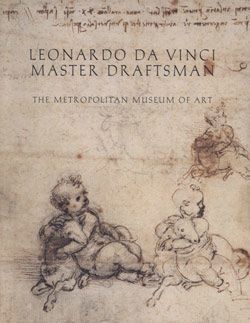The Head of a Woman in Profile Facing Left
Giovanni Antonio Boltraffio Italian
Follower of Leonardo da Vinci Italian
Not on view
Acquired in 1917 by the Metropolitan Museum of Art at the famous London auction of the Pembroke collection, this drawing was considered to be by Leonardo until about 1900 when it was published by Sandford Arthur Strong, who thought it by an artist of the Milanese School, possibly Ambrogio de’ Predis or Boltraffio. The drawing surface of the Metropolitan Museum of Art study in silverpoint and leadpoint is abraded throughout, and this compromised physical condition is rarely mentioned in the literature probably because this sheet is infrequently examined in the original. The damaged state affects the discussion of the drawing’s attribution which is here endorsed as by Boltraffio. The blue-gray (indigo) preparation exhibits minute, but extensive losses of pigment, and the delicate parallel-hatching in silverpoint and leadpoint is very faint in numerous passages. The woman’s facial profile reveals that the artist redrew the main outlines with a greater pressure of his hand, slightly indenting these outlines on the paper. In contrast, the contours of the woman’s neck and of the articulated shoulder of the figure seen at left on the sheet are more delicate.
In discussing the attribution of this drawing, scholars have paid little notice to the compromised physical condition of this work. The drastic cropping of the sheet around the head diminishes the visual impact of the drawing. This study is executed in the characteristic metalpoint technique on blue-gray prepared paper employed by Leonardo’s pupils between 1490 and 1500, and with especial mastery by Giovanni Antonio Boltraffio. The attribution to Boltraffio is supported especially by the very soft modeling of lights and shadows with sfumato effects on the facial features. This softness of touch is evident on the woman’s brow, the undersides of her nose, lips, and chin. Also typical of Boltraffio is the delicately blended technique of parallel-hatching with uniform, densely interwoven strokes in the anatomical forms and in the background, and with more emphatic main contours of the face. Relevant comparisons for the style and technique of the Metropolitan sheet are Boltraffio’s figural drawings preserved in Milan, Biblioteca Ambrosiana (inv. F 263 inf. n. 99 e F 263 inf. n. 100; Spadaccini 2019, pp. 47-50 e figs. 31-34), as well as his slightly later studies in Windsor, Royal Library inv. RCIN 912512; in Williamstown, Sterling and Francine Clark Art Institute inv. 1955.1470; in Turin, Biblioteca Reale inv. Dis. Ital. 1/33, 15587; illustrated and discussed in Bambach 2019, vol. 3, pp. 506-13, figs. 13.19-13.21). The particularly soft style of this silverpoint and leadpoint drawing rules out an alternative attribution of the sheet in the Metropolitan Museum of Art to either Ambrogio de’ Predis or the Maestro della Pala Sforzesca, who also drew in this technique but with a harsher quality of line. Both Boltraffio and Marco d’Oggiono were documented in Leonardo's studio in 1490, when Salaì stole their silverpoint styluses (see Paris, Bibliothèque de l’Institut de France inv. 2174, MS C, fol. 15 verso). Boltraffio and Marco d’Oggiono were masters of metalpoint drawing techniques in the 1490s. During their partnership in that decade, Boltraffio, whom I consider the better and more innovative draftsman, often assumed the role of main designer and produced the preliminary drawings in the production of their paintings (Bambach 2019, vol. 3, pp. 505-9).
In 1982, Mauro Natale convincingly connected the study of a woman’s head at the Metropolitan Museum of Art to the Madonna Nursing the Christ Child (Milan, Museo Poldi Pezzoli inv. 1655/639), painted by a still unidentified Lombard artist (fig. 1), and discussed here by Maria Teresa Fiorio as cat. I.3. The woman’s physiognomic type derives from Leonardo’s art, as seen, for example, in his celebrated silverpoint study from life for the head of the Virgin in the Musée du Louvre (Département des Arts graphiques inv. 2376). The design of the woman’s head in the Metropolitan sheet also accords well with that seen in the Madonna Litta (State Hermitage Museum, Saint Petersburg), a painting which is of controversial attribution and which many early critics thought to be by Leonardo himself, but which is the work of a pupil or follower. Alessandro Ballarin, Pietro C. Marani, and other scholars have convincingly attributed the Madonna Litta to Boltraffio, while David A. Brown has ascribed it to Marco d'Oggiono. The Metropolitan drawing was remounted around 1980, to reflect the fact that the head of the female figure was intended to be seen inclined toward the left, when it was compared to the Madonna Litta (pointed out by Carlo Pedretti in 1974; and David A. Brown, letter in Archive of the Department of Drawings and Prints, The Metropolitan Museum of Art, 19 August 1980). Early twentieth-century photographs illustrate this drawing mounted as if the head were in an entirely upright vertical profile on the seventeenth-century Pembroke mount; the Pembroke mounting itself accords with the placement of Sir Peter Lely's collector stamp. The remounting since 1980 also corrects the fact that the right-handed strokes of parallel-hatching are meant to course in a diagonal direction.
Carmen C. Bambach; October 2019
This image cannot be enlarged, viewed at full screen, or downloaded.
This artwork is meant to be viewed from right to left. Scroll left to view more.







